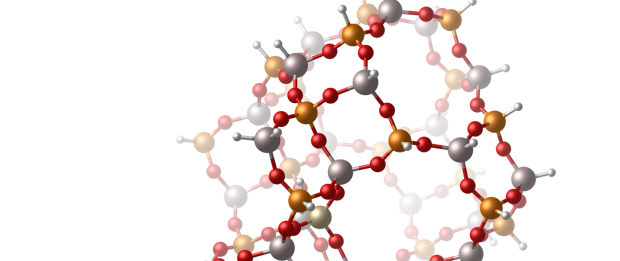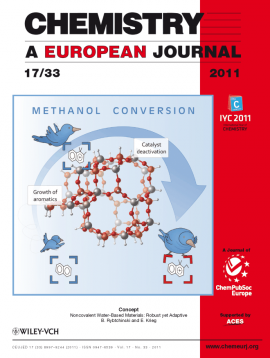

Abstract
The role of naphthalenic species during the methanol-to-olefins (MTO) process in a silicoaluminophosphate zeolitic material exhibiting the chabazite topology (H-SAPO-34) has been studied from first principles. These species could either act as active olefin-eliminating compounds or as precursors for deactivating species. Results incorporating van der Waals contributions for finite large clusters point out that successive methylation steps of naphthalenic compounds are feasible. The calculated intrinsic activation barrier is relatively independent of the number of methyl groups already attached on the aromatic compound and is approximately 140 kJ mol(-1) . The influence of the composition of the catalyst and hence the acidic strength on the intrinsic chemical kinetics was investigated in detail through comparison with the isostructural high-silicon material. Apparent chemical kinetics, starting from adsorbed methanol on the acid site, were also computed. The initiation steps of the side-chain route starting from a trimethylated naphthalenium ion were also examined. The actual side-chain methylation exhibits a high barrier and hence this mechanism involving methylated naphthalenes is not expected to be an active ethene-eliminating route in H-SAPO-34.
Copyright © 2011 WILEY-VCH Verlag GmbH & Co. KGaA, Weinheim.
